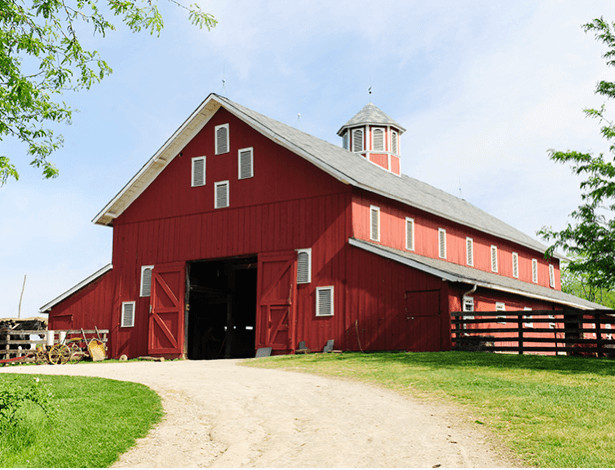How Much Does a Tractor Cost?
How Much Is My Tractor Worth?
Best Tractors for Small Farms
How Much Does a Tractor Tire Weigh?
Most Useful Tractor Implements
Most Popular Tractor Brands
What are Hay Balers?
How Many Bales of Hay Per Acre Can You Produce?
Tractors & Road Safety
What Does PTO Stand for on a Tractor? And How Does It Work?
How To Operate a Skid Steer
Skid Steer Attachments
Manure Spreaders
Grapple Buckets
How Do Combine Harvesters Work?
Autonomous Tractors
Considering a Stocker Cattle Operation?
What is an Excavator?
How much does a Forklift Cost?
How Much Does a Bulldozer Weigh?
Different Types Of Cattle Barns
How Is Hemp Harvested?
How Does a Concrete Crusher Work? Understanding the Role and Mechanisms of Concrete Crushers
A Beginner’s Guide to Online Farm Equipment Auctions
How to Harvest Basil in Your Farm or Garden
How Online Farm Auctions Are Transforming the Ag Industry
Corn Harvesting: Where Is Corn Grown in the U.S.?
How to Write Off Farm Equipment on Taxes
Bale Beds for Sale New & Used
Guide to Tillage: What Is Tillage Equipment & Its Process?
Evolution of the Bulldozer
Bulldozers in Construction
How Cinnamon Is Harvested
Selling Used Farm Equipment
Understanding Commodity Price Trends
What Are The Different Types Of Cattle Barns?

Whenever you’re driving through the open plains, you’re sure to take in cattle barns as part of the landscape. Some may look like your stereotypical barn and others may look a bit more industrious. Why? Cattle barns have different purposes, and their styles change depending on the farmer’s goals.
The right cattle barn can ultimately streamline operations and maximize labor, which is what many producers are seeking in today’s economy. Let’s get into the details of different barn designs for beef cattle and dairy cattle, and how they fit into your farming needs.
What is a Cattle Barn?
First thing’s first: What is a cattle barn? Just as the name suggests, it’s a barn for cows (or other livestock), an outlying building used for storing feed and housing. Cattle barns are built to protect cattle and other livestock from the elements in order to keep them safe and healthy. There are three main styles of cattle barns, which we’ll break down in more detail below.
Three Types of Cattle Barns
-
Monoslope Cattle Barns
Monoslope barns are made out of steel and wood, with one side of the roof higher than the other. This design allows for the sun and wind to balance out during the seasons. For example, in the winter, the sloped roof maximizes sun exposure, and in the summer, maximizes shade.
The major pros of monoslope cattle barns are optimum air quality, higher overhead clearance, abundance of natural light, and durability. The cons include costliness and a more intricate design, typically leading to a longer construction.
Monoslope barns are an ideal choice for dairy cattle because of the high ventilation and easy cleanup.
-
Vented Gable Roof Barns
Vented gable roof barns are also made out of wood and steel, but with both sides of the roof sloping upward and meeting in a covered vent middle point.
The major pros of these types of barns are durability, cost effectiveness, and easier, more traditional construction. Cons of vented gable roof barns include poor lighting, lower overhead clearance, and having to rely on the effectiveness of the ridge vent for ventilation.
Vented gable roof barns are an ideal choice for beef cattle because they’re stronger structures that can withstand high winds.
-
Hoop Barns
These types of barns are shaped with corrugated metal, or what’s known as Quonset-shaped. You’ll recognize it by its tarp or canvas covered roof and steel arches.
The advantages of hoop barns for cattle include low cost, ease of construction, good lighting, and good overhead clearance. Cons include a shorter lifespan of the tarped roof, limited ventilation, and a structure that’s more prone to damage.
Hoop barns for cattle are an ideal choice for both dairy and beef cattle because of the good ventilation and cost for size.
How to Choose the Right Cattle Barn
Now that you’ve read the rundown about the three major types of cattle barns, it’s time to assess which style of barn will best accommodate your needs. Here are several important questions to ask before determining which cattle barn to choose:
- What does my livestock need? More sun? More ventilation?
- What is my budget for an initial cattle barn investment?
- How big of a structure can my land accommodate?
- What is the size of my herd?
- Which barn style is best for the climate in my area?
- What permits are needed to build the cattle barn?
- What type of flooring will be needed? Traditional straw bedding on a concrete or dirt floor? Concrete or rubber slats with openings for waste drains?
- In what ways will a cattle barn improve farming operations both in the short- and long-term?
Conclusion
Cattle barns are versatile and should help your cattle, or other livestock, remain protected and healthy. If you’re seeking high-quality and cost-effective barn manufacturers , feeders, or general farming equipment that can help improve your cattle barn operations, reach out to our team at Fastline today.